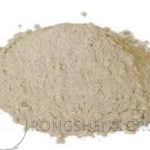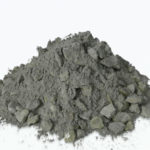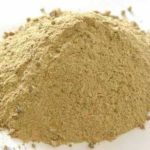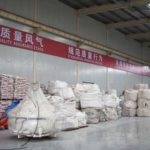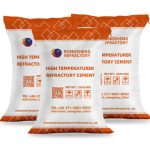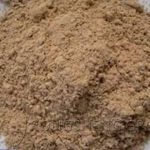Refractory castable cement is a type of refractory cement used in the production of refractory castables. It can also be used as a binder and additive. Due to its stable performance and good results, castable refractory cement is an indispensable refractory raw material.
Castable refractory cement is a type of cement with a refractoriness of not less than 1580℃. It is made from bauxite and lime, mixed in a certain proportion to form raw meal. After sintering, the resulting clinker, mainly composed of aluminates, is ground into fine powder to produce a hydraulically cementitious material with refractory properties. Castable refractory cement is a type of refractory clinker that can be directly added during the production of castables. Depending on the raw materials and composition, it can be classified into aluminate refractory cement, low-calcium aluminate refractory cement, calcium-magnesium aluminate cement, and dolomite refractory cement, among others.
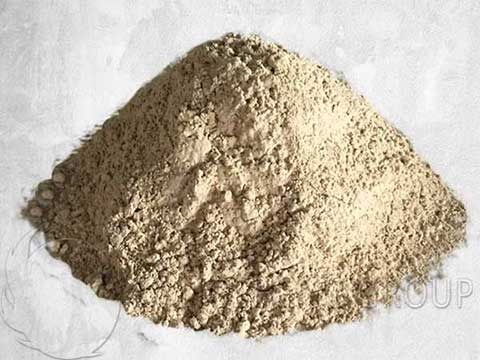
Applications of Castable Refractory Cement
- Refractory cement can be used to bind various refractory aggregates (such as corundum, calcined high-alumina bauxite, etc.) to produce refractory mortar or concrete. It is used as lining for cement rotary kilns and other industrial kilns.
- It can be mixed with lightweight aggregates to produce insulating and heat-resistant concrete.
- It can be mixed with asbestos to produce asbestos cement products with insulating and heat-resistant properties.
Technical Requirements for Refractory Cement
- Fineness of Refractory Cement: The finer the cement particles, the larger the specific surface area, the faster and more complete the hydration reaction, resulting in higher early and later strength. It is stipulated that the specific surface area should be greater than 300 square meters per kilogram. Otherwise, it is considered unqualified.
- Setting Time of Refractory Cement: To ensure sufficient time for mixing, transportation, molding, and other processes during construction, the initial setting time of cement should not be too short. After construction, it is desirable for the cement to harden and develop strength as quickly as possible. Therefore, the final setting time should not be too long. The initial setting time of refractory cement should not be earlier than 45 minutes, and the final setting time should not be later than 390 minutes.
- Volume Stability of Refractory Cement: The uniformity of volume change during the setting and hardening process of cement paste is called the volume stability of castable refractory cement. Uneven volume change, i.e., poor volume stability, can easily lead to warping and cracking, reducing project quality and even causing accidents.
Precautions for Using Refractory Cement
When using castable refractory cement, add an appropriate amount of water and stir to form a paste. It hardens in air or, even better, in water, and firmly binds other aggregates and powders in the refractory castable together.
Refractory cement is characterized by rapid hardening, high bonding strength, strong plasticity, and convenient construction. Unlike common cement, 3000 degree castable refractory cement acts as a binder in high-temperature environments, rapidly hardening and bonding effectively, thus improving the high-temperature performance of refractory castables. While refractory cement has a wide range of applications, in the refractory materials industry, it is primarily used as a binder in the production of refractory castables.
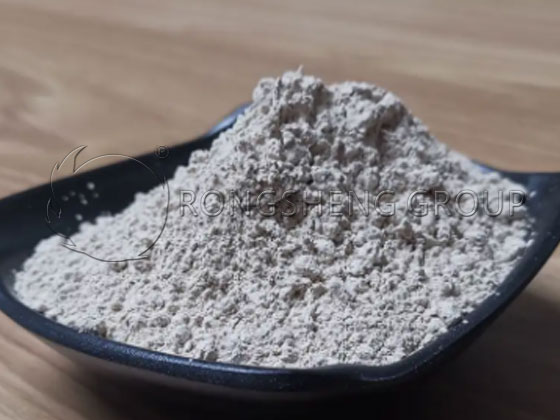
The Role of Cement in Refractory Castables
What is the role of cement in refractory castables? Many people are not very familiar with refractory castables. Because they resemble cement in appearance, many people call them refractory cement, which is indeed an alternative name. However, the 3000 degree castable refractory cement is actually aluminate cement. Its rapid setting speed affects the room temperature strength of the refractory castable, so it is used as a binder.
With the continuous development of refractory castables, their varieties have increased, their application range has expanded, and their production volume has continued to rise, playing a significant role in high-temperature technology.
The role of castable refractory cement to combine with refractory aggregates, refractory powders, and other admixtures to form refractory castables. The resulting refractory castables possess properties such as wear resistance, high-temperature resistance, and high fluidity. There are four types of aluminate cement, with a service temperature of 1480℃; it is also known as high-alumina cement and refractory cement.
Aluminate cement is heat-resistant and sets quickly, making it suitable for repairing small high-temperature furnaces. However, its performance is further enhanced when combined with a certain proportion of refractory aggregates. Corundum refractory castables, high-alumina castables, low-cement castables, and steel fiber castables all contain aluminate cement, making construction easier.
Aluminate cement can be used alone or in combination with refractory aggregates and powders. However, using it alone has several drawbacks, including a tendency to crack and a shortened lifespan. Combining it with refractory aggregates, on the other hand, improves both the refractoriness and compressive strength of the castable, thus extending its service life.
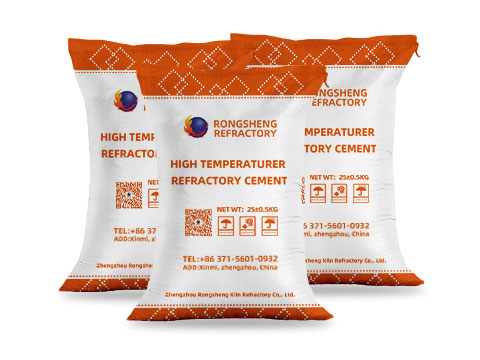
The Issue of Cement Proportion in Castables
Many customers believe that the higher the cement proportion in refractory castables, the better the strength of the castable. This is not the case! The cement content in refractory castables must be added in the correct proportion!
Castables using cement as a binder require water to participate in the chemical reaction during the hardening process, forming settling and hardening strength. Therefore, this type of refractory castable is called a hydraulic refractory castable. Cement is the main factor determining the strength of the castable, but its refractoriness is relatively low. Therefore, after ensuring the necessary room temperature strength, the amount of 3000 degree castable refractory cement should be reduced as much as possible.
If density and workability are required, refractory powder can be appropriately increased. Reducing the amount of cement is also one of the measures to reduce costs. During construction, it is strictly forbidden to mix aluminate cement with silicate cement, lime, etc. This is because mixing these two substances with different chemical compositions will produce hydrated tricalcium aluminate, which greatly reduces the strength.
What are the differences between refractory mortar, refractory cement, and refractory castable?
Refractory mortar, refractory cement, and refractory castable are all monolithic refractory materials and are commonly used in the refractory industry. Refractory mortar is used for laying refractory bricks; it is also called refractory adhesive or jointing material. It is used as a jointing material in refractory masonry. Refractory cement is used to make refractory concrete. Refractory castable is made from refractory aggregates, powders, and binders; because it is poured into the concrete, it is also called castable.
Leave Your Requirements on RS Kiln Refractory Bricks And Castable Materials! We Will Reply You In 12 Hours!:

